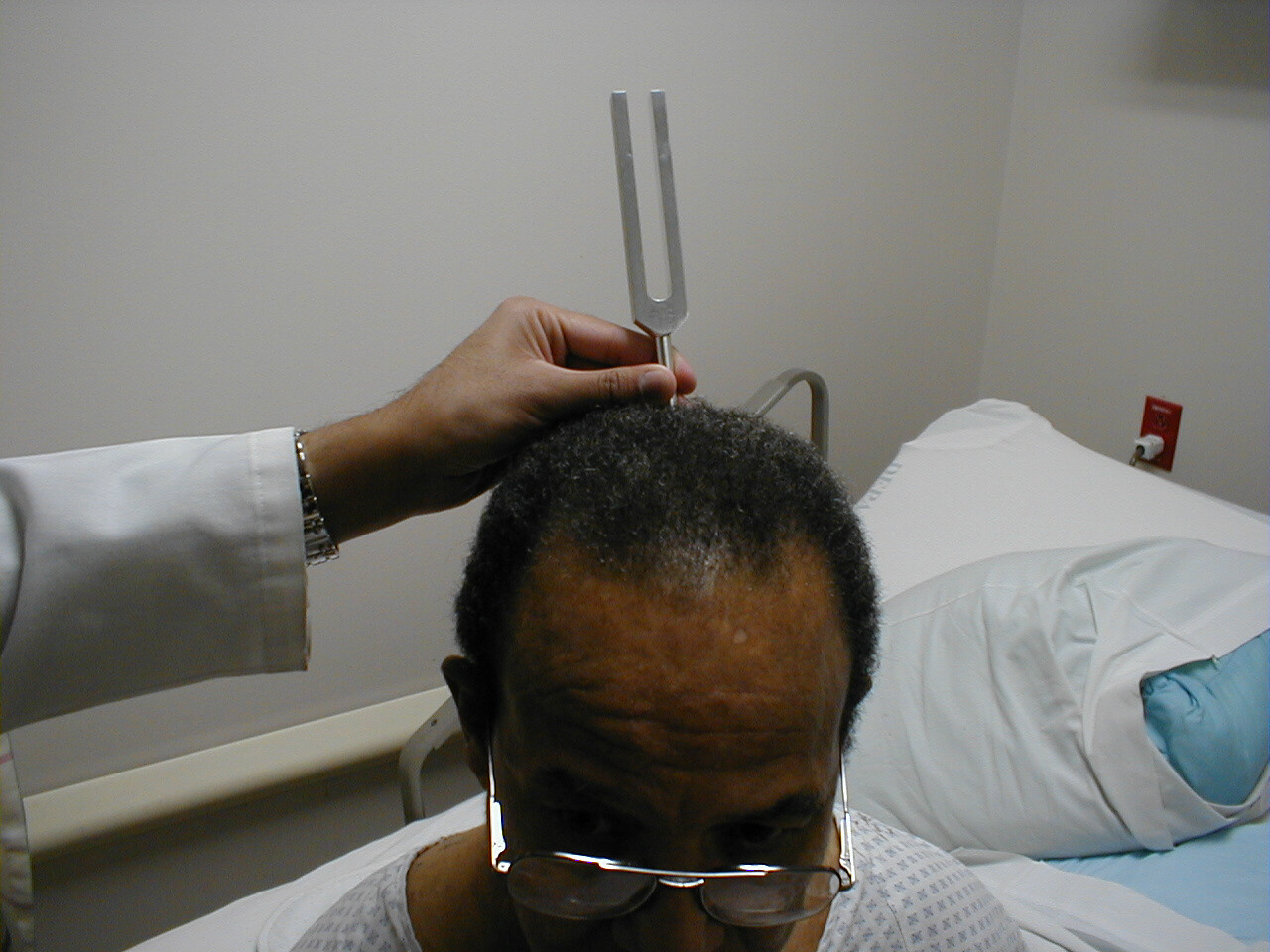Weber test
| Weber test | |
 | |
|---|---|
| Weber test. (Image courtesy of Charlie Goldberg, M.D., UCSD School of Medicine and VA Medical Center, San Diego, California) |
|
WikiDoc Resources for Weber test |
|
Articles |
|---|
|
Most recent articles on Weber test |
|
Media |
|
Evidence Based Medicine |
|
Clinical Trials |
|
Ongoing Trials on Weber test at Clinical Trials.gov Clinical Trials on Weber test at Google
|
|
Guidelines / Policies / Govt |
|
US National Guidelines Clearinghouse on Weber test
|
|
Books |
|
News |
|
Commentary |
|
Definitions |
|
Patient Resources / Community |
|
Patient resources on Weber test Discussion groups on Weber test Patient Handouts on Weber test Directions to Hospitals Treating Weber test Risk calculators and risk factors for Weber test
|
|
Healthcare Provider Resources |
|
Causes & Risk Factors for Weber test |
|
Continuing Medical Education (CME) |
|
International |
|
|
|
Business |
|
Experimental / Informatics |
Editor-In-Chief: C. Michael Gibson, M.S., M.D. [1]
The Weber test is a quick screening test for hearing. It can detect unilateral (one-sided) conductive hearing loss and unilateral sensorineural hearing loss.
Performance
In the Weber test a tuning fork (either 256 or 512 Hz) is struck and the stem of the fork is placed on the top of the patient's skull - equal distance from the patient's ears, in the middle of the forehead - equal distance from the patient's ears or above the upper lip over the teeth. The patient is asked to report in which ear the sound is heard louder.
(Images courtesy of Charlie Goldberg, M.D., UCSD School of Medicine and VA Medical Center, San Diego, California)
-
512 hertz tuning fork
-
Weber test
Detection of conductive hearing loss
A patient with a unilateral (one-sided) conductive hearing loss would hear the tuning fork loudest in the affected ear. This is because the conduction problem masks the ambient noise of the room, whilst the well-functioning inner ear picks the sound up via the bones of the skull causing it to be perceived as a louder sound than in the unaffected ear. Another theory, however, is based on the occlusion effect described by Tonndorf et al in 1966. Lower frequency sounds (as made by the 512Hz fork) that are transferred through the bone to the ear canal escapes from the canal. If an occulusion is present, the sound cannot escape and appears louder on the ear with the conductive hearing loss
Conductive hearing loss can be mimicked by plugging one ear with a finger and performing the Rinne and Weber tests, which will help clarify the above. The simulation of the Weber test is the basic for the Bing test.
Detection of sensorineural hearing loss
A patient with a unilateral sensorineural hearing loss would hear the sound loudest in the unaffected ear, because the affected ear is less effective at picking up sound even if it is transmitted directly by conduction into the inner ear.
Incompleteness
This test is most useful in individuals with hearing that is different between the two ears. It cannot confirm normal hearing because it does not measure sound sensitivity in a quantitative manner. Hearing defects affecting both ears equally, as in Presbycusis will produce an apparently normal test result.
Additional Rinne test
Nevertheless, by complementing with the Rinne test, a quick screening test can be made. Still, these and are no replacement for formal audiometry.
An additional Rinne test determines if unilateral (one-sided) hearing loss is due to sensorineural loss ("nerve deafness") or due to conductive loss (i.e. from ear wax impaction, ruptured/ scarred eardrum, or ear ossicle dysfunction). The Rinne test is almost always performed with the Weber test to establish in which ear bone conduction is loudest. Using the information from the Weber test (which ear has the loudest perceived sound through bone conduction) and the Rinne test (which ear has better hearing by air conduction) and the perceived hearing loss (which ear is hard of hearing), a determination of sensorineural or conductive hearing loss can be made.
If the Rinne test shows that air conduction is greater than bone conduction in both ears and the Weber test lateralizes to a particular ear, then there is sensorineural hearing loss in the opposite (weaker) ear.
If the Weber test lateralizes to the "weaker" ear and the Rinne test demonstrates better bone conduction than air conduction in the "weak" ear, conductive hearing loss is confirmed. If the Weber test lateralizes to the "stronger" ear and the Rinne test indicates weaker air conduction in the "weaker" ear, a combined hearing loss is likely.
See Also